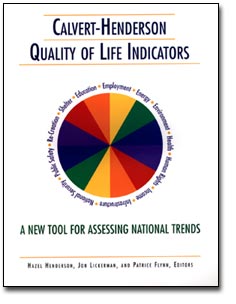Rising the food rice is one of the factors that can affect the Quality Of Life.From this issue,I think this is not a good idea for the government to rise the price of food such as sugar,rice and flour to subsidies the poor.Moreover,in economic aspects,there are some issues that relate for Quality of Life.Food prices have been rising for a while. In some countries this has resulted in food riots and in the case of Haiti where food prices increased by 50-100%, the Prime Minister was forced out of office. Elsewhere people have been killed, and many more injured. While media reports have been concentrating on the immediate causes, the deeper issues and causes have not been discussed as much.
” The food crisis appeared to explode overnight, reinforcing fears that there are just too many people in the world. But according to the FAO, with record grain harvests in 2007, there is more than enough food in the world to feed everyone-at least 1.5 times current demand. In fact, over the last 20 years, food production has risen steadily at over 2.0% a year, while the rate of population growth has dropped to 1.14% a year. Population is not outstripping food supply. “We’re seeing more people hungry and at greater numbers than before,” says World Hunger Program’s executive director Josette Sheeran, “There is food on the shelves but people are priced out of the market.”
Eric Holt-Giménez and Loren Peabody, From Food Rebellions to Food Sovereignty, Institute for Food and Development Policy, May 16, 2008
To understand why people go hungry you must stop thinking about food as something farmers grow for others to eat, and begin thinking about it as something companies produce for other people to buy.
- Food is a commodity….
- Much of the best agricultural land in the world is used to grow commodities such as cotton, sisal, tea, tobacco, sugar cane, and cocoa, items which are non-food products or are marginally nutritious, but for which there is a large market.
- Millions of acres of potentially productive farmland is used to pasture cattle, an extremely inefficient use of land, water and energy, but one for which there is a market in wealthy countries.
The problem, of course, is that people who don’t have enough money to buy food, simply don’t count in the food equation.
- In other words, if you don’t have the money to buy food, no one is going to grow it for you.
- Put yet another way, you would not expect The Gap to manufacture clothes, Adidas to manufacture sneakers, or IBM to provide computers for those people earning RM1.00 a day or less; likewise, you would not expect ADM (“Supermarket to the World”) to produce food for them.
What this means is that ending hunger requires doing away with poverty, or, at the very least, ensuring that people have enough money or the means to acquire it, to buy, and hence create a market demand for food.
– Richard H. Robbins, Readings On Poverty,Hunger,and Economic Development

 What is “Quality of Life”(QOL)? What do you understand about Quality Of Life? What parameters can be used to measure QOL? QOL is increasingly refered to in evaluating urban and rural areas, and in several other situations. Some definitions, models and more …I think QOL is a very important for us to maintain our living standard…These are some definitions about Quality of Life..
What is “Quality of Life”(QOL)? What do you understand about Quality Of Life? What parameters can be used to measure QOL? QOL is increasingly refered to in evaluating urban and rural areas, and in several other situations. Some definitions, models and more …I think QOL is a very important for us to maintain our living standard…These are some definitions about Quality of Life..